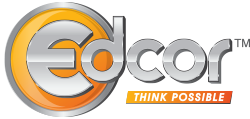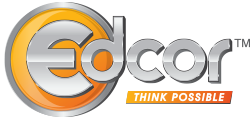Education innovation is creating an environment that will prepare many adult learners for innovation and changes in the workplace. The pandemic has changed how businesses get things done. It also has changed how students experience education. Whether the changes are creating a “new normal” or are a step along the way to a different reality, today’s education innovation will prepare learners to be successful in the labor market.
Education innovation caused by the pandemic has created best practices that can make education better, says Paul Cowell from University of Stirling through the World Economic Forum. Changes in how students learn mirror what workers must do in their jobs, especially in the areas of assessment and engagement, and education and career pathways.
Assessment
Pre-pandemic, assessment generally was in the form of exams. Assessments evaluated what students could recall. However, the pandemic made it impossible to administer exams in person. Assessment had to be different. Education innovation has brought something new and better into the assessment process. Cowell says that traditional exams focus on recalling information and don’t represent student skills such as creativity, or the ability to learn. Alternate assessments show more than what students remember. “Assessments that are open-book – such as producing case studies, putting together policy briefing papers, and recording podcasts – reward curiosity and academic inquiry. Here, assessment is part of the learning journey,” says Cowell.
Alternative assessments require students to engage with their subject and solve complex issues. In these situations, education innovation creates assessments that resemble work conditions. Workers cannot merely “pass” a work task or complete it to 70 or 80 percent. Workers must find answers and solutions. They must investigate, then evaluate and apply what they are learning. Students that engage with alternative exams, to demonstrate what they know and how they can apply it, will be the workers that can solve complex issues that arise. They are employees who will continue to learn while they are working. Every test of a worker’s skill becomes part of the working journey.
Engagement
The pandemic has changed the way students engage with classes and education environments. Students’ attendance was a measure of their engagement, pre-pandemic. Students could be passive learners in a lecture environment. However, the pandemic changed that. The need for virtual attendance spurred education innovation that created opportunities for multiple levels of engagement. Engagement now includes participation in online discussions, online group activities and opportunities to take leadership rolls. Cowell says, “Lectures can be replaced with peer instruction – where students assume the role of instructor and teach their peers – or virtual field trips, where a class is able to take a virtual tour of a physical space.”
Engaged workers must assume these same kinds of responsibilities. Workers must investigate and report to each other to share vital information. People must be able to take on leadership rolls and coordinate the efforts of co-workers. Students who have engaged in active learning environments will have experience with all this. They will be future leaders and problem solvers at their work. They will be willing to accept challenges, seek solutions and take risks.
Career and Education Pathways
Education innovation is creating more direct pathways to education goals, and these closely relate to career advancement. Virtual education environments can build learning communities and networks of students and alumni. Just as workers use networks of colleagues to find resources and solve problems, students become part of networks that learn together and work together to find solutions.
Prior learning assessments recognize skills and knowledge that learners already have acquired. These, along with competency-based programs, move learners down a path toward education completion and opportunities to demonstrate their knowledge to employers. Stackable credits that allow students to learn specific skills and earn certificates can speed the process toward an end degree.
There is no single solution to ensure that workers and learners will be successful as they seek employment after the pandemic. Education innovation has already and will continue to change the education journey. “At a time when millions of displaced Americans are in need of retraining in order to re-enter the workforce, our nation’s universities must innovate in order to meet the needs of adult learners,” said Vickie Schray, chief external affairs officer for Zovio, an edtech services and solutions provider. “In 2021, we expect even more universities will expand their offerings to include workforce development programs designed to create pathways for greater economic mobility and close the skills gap, particularly in the area of technology.” Workers who take advantage of innovative practices and employers that support them with tuition assistance will find strong recovery after the pandemic.
By Adrienne Way, Edcor CEO and owner



